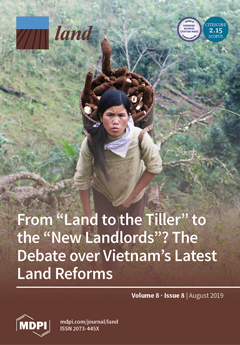Agricultural land pawning is not a new phenomenon to the traditional communities (
Masyarakat Adat) in Indonesia, especially the matrilineal
Minangkabau people who rely on their agricultural land for economic transactions. Based on the national law, customary law (referred to as
Adat
[...] Read more.
Agricultural land pawning is not a new phenomenon to the traditional communities (
Masyarakat Adat) in Indonesia, especially the matrilineal
Minangkabau people who rely on their agricultural land for economic transactions. Based on the national law, customary law (referred to as
Adat Law hereafter) is to prevail over agrarian issues in Indonesia. But even so, agrarian issues remain under the influence of national law. This study discusses the management of agricultural land pawning in the matrilineal
Minangkabau society according to national,
Adat, and Islamic laws. Despite its popularity, the
Adat law approach in dealing with land issues, especially agricultural land pawning, has not been well accommodated under National Law. This paper investigates how agricultural land pawning is regulated in Indonesia, with a focus on the
Minangkabau society in West Sumatra. This paper does not seek to promote one legal system over another, but instead, it intends to promote legal certainty in agricultural land pawning in West Sumatra. To show how the lack of legal certainty can lead to confusion and conflict, this study relies on the contradicting verdicts of an agrarian conflict case from lower courts to the Supreme Court. The study reveals that the contradiction between national agrarian laws,
Minangkabau Adat law and West Sumatra local Regulation No. 16/2008 on Communal Land Tenure causes confusion within the community and the judiciary. Legal certainty is crucial to strengthening the rule of law and democracy in Indonesia, and the conflicting interpretations of agrarian laws belittle this concept. This study suggests that one way to deal with legal uncertainty regarding agrarian law in West Sumatra, and throughout Indonesia, is to promote a stronger and more just decentralization, which is increasingly important as the country faces the question of legal unification. The suggested decentralization effort would leave local issues to the authority of local legislations.
Full article





